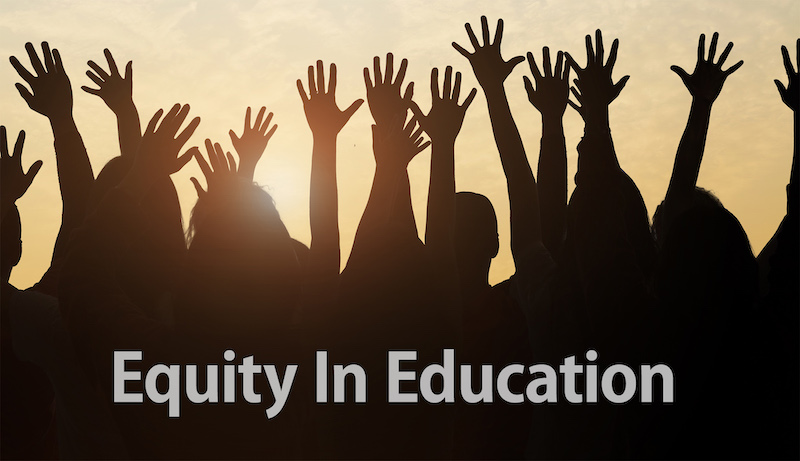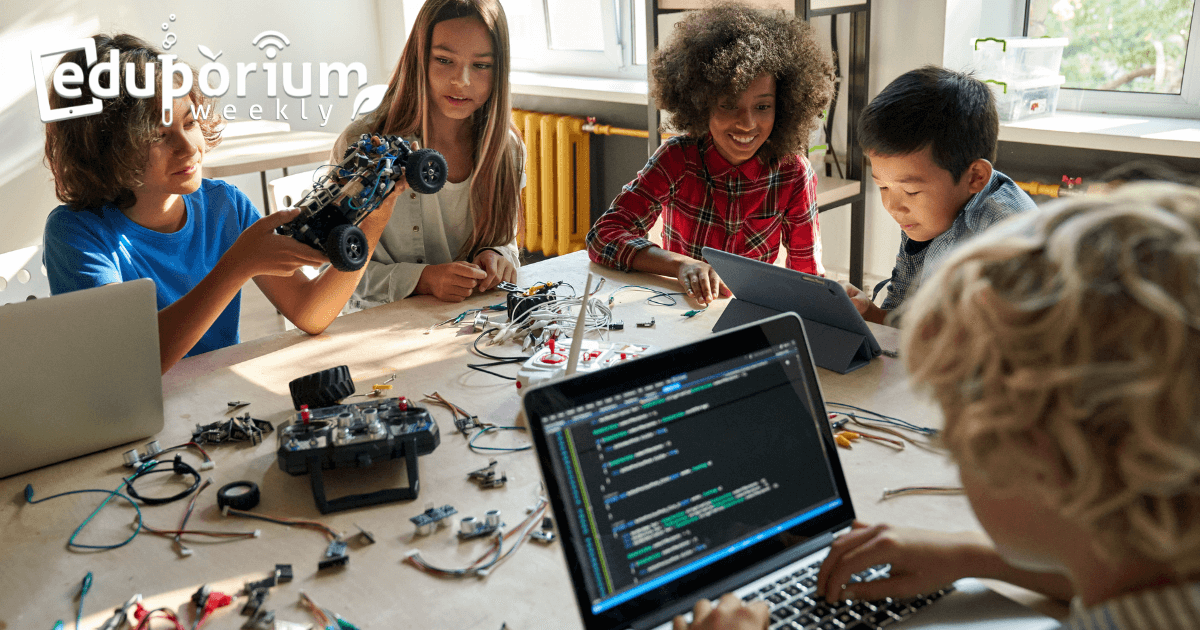In this unique time in education, there's still so much that educators can't do for their students or even for themselves. Students needed so much support while learning remotely—instructional and emotional—and will continue to need extra attention in the coming years. And, like they always do, teachers have tried their hardest in providing it. No matter their commitment, however, there are often some things they simply can't control. It's certainly much more of a focus today but equity in education isn't a guarantee. We now know, however, that it's essential for student success and should be a pre-existing condition in every classroom.
How Can we Achieve Greater Equity in Education?
Ideally, every lesson plan and educational experience would foster equity for every student in every school building. The fact is, however, that every student is different. Some need more personalized guidance and others might need opportunities for independent exploration. Even already having so much on their plates, achieving better equity often involves classroom teachers. It could also start at the top with administrators, including curriculum designers and technology directors. If educators can regularly lead more intentionally designed lessons that promote equity, they can focus more on building strong relationships with students.
Building relationships to boost equity.
We know that building relationships with students is vitally important from an SEL perspective—especially today. These relationships, however, also help create greater educational equity. Building relationships with students allows teachers to foster a greater sense of community, which, in turn, also helps level the playing field and increase true equity. When all students have access to purposefully designed lessons or activities, they all have the same opportunity to become critical thinkers and lead their own learning. Besides lesson design, classroom teachers also set and maintain the classroom environment. Ideally, this should include culturally responsive teaching, elements of inclusion, and potentially trauma-informed practices.
Personalization and classroom equity.
Culturally responsive lesson design is actually a brilliant way to make kids feel more included. As diversity among the students in our country increases, teachers should look to try this anyway. But, knowing that it can improve both equity and outcomes can drive them to be more intentional about embodying it. Cultural responsiveness and intent also helps teachers keep their students' attention. Once they're able to connect with them, that's when they can make more of an effort to include the purposeful elements of their lessons on their way to amplifying equity. This often includes incorporating personalization for each student, which gives them options in receiving instruction, showing knowledge, and using what they learn moving forward.
Understanding Classroom Equity and Equity Gaps
Equity issues in education, despite a lack of awareness from many, are nothing new. They have, however, certainly been brought into greater focus over the last couple of years and plenty of us have taken a much bigger interest in the topic throughout this time. At the heart of promoting equity in education, our school officials and classroom teachers need to understand the key differences between equity and equality. First, equity entails ensuring that every student in every classroom, school, and district has an equal chance—an equal chance to access materials, an equal chance to grow, and an equal chance at receiving high-quality instruction. As student diversity has increased, however, equity doesn't always follow across the board.
What contributes to equity gaps?
We know that many of the factors driving equity gaps in education are things students or parents can't control. They include race, culture, gender, physical location, socioeconomic status, and others that are equally concerning. If all students were truly in an equitable situation, being tied to one (or more) of these identifiers would not hold them back in any way. The reality for many, however, is that they're affected by inherent traits—largely without ever even realizing it. So, to go beyond fostering equality (providing all the same resources and support for all students), educators who strive for equity truly understand all of their students' needs and provide much more direct, purposeful, and often personalized support.
Setting students up for educational success.
It's powerful to take a step back and think about how diverse our student body has become. Perhaps even more so, it's alarming to also think about how far from diverse the education system is. With this persistent lack of diversity in instruction, it's nearly impossible for students from different situations to experience true equity. They'll deal with certain biases or traumas while also fighting through various trials and experiences. And, that's often simply to get by—not to excel in their education. Part of the reason equity gaps persist is because it is incredibly tough to stem these issues despite recognizing they exist. We should all, however, regularly look at how institutional and instructional approaches may potentially fail in fostering equity.

Tips for Creating a More Equitable Classroom
For teachers, committing to a greater focus on equity may mean dissecting every detail of their approach. This can be a good thing or bad thing depending on how extensive it becomes. The importance of equity in education, however, shouldn't ever be ignored—it just requires some strategic efforts so that educators are promoting equitable experiences in the best ways. One of those key elements to getting things right is for teachers to reflect on themselves. To ensure true equity, the instruction first must be free of any biases. These may be based on race, gender, or anything else but educators (and, frankly, all of us) may not even realize they're putting forth certain behaviors without actively monitoring their own words and actions.
Basic do's and don'ts for establishing classroom equity.
Beyond monitoring how students perceive their intent, educators can also actively reduce certain barriers that historically have hindered equity. Starting with things to avoid, it's best to never ask students to learn everything about their race, background, or culture. They'll learn a lot about this over time but forcing that on them could do more harm than good. Also, educators shouldn't ever make any assumptions about any students' backgrounds. Assuming that students who look the same have shared comparable life journeys can, understandably, be problematic as well. So, what can classroom teachers do to work towards greater educational equity? Two simple but effective strategies include diversifying the curriculum and its context and holding every student—regardless of background—to high (and clear) expectations.
The culture and the environment.
Next, educators should establish a classroom environment that embodies inclusion. They can speak with administrators in doing this but should do so starting earlier on. It's also important to accommodate those unique learning styles of individual students, including any learning challenges or disabilities. Educators can do this by using different types of media, offering supplemental learning materials, clarifying classroom instructions verbally, and in other ways. Further, it sometimes might be necessary for educators to consider how they're using technology and even how they speak about it. Not every student will have grown up with a tablet at their fingertips and high-speed Internet that's always on. If referencing these things or assuming students know how to use them, it could create inequity and discomfort.
How to Promote Equity in School Environments
Equity, as we've seen in the last couple years, is a great thing to have. In education, however, we know that it's not something that just naturally settles into place in every situation. Sometimes, it requires active effort from teachers and school officials to address these gaps and drive lasting change. It's also tricky, however, because shortcomings in equity occur over long-term periods and affect students differently from school to school, city to city, or individual to individual. Educational leaders also need to remember that any attempts to offset inequities may also, ironically, be inequitable. Like we've said, it's extremely tough to pinpoint the best ways to increase equity, but we can always try.
Small steps to increasing educational equity.
It's different in every school building but, generally, addressing inequity concerns works best with a solid plan in place. One way to start is with creating an equity director position so someone on the school staff can focus solely on these issues. If that's not feasible, however, education leaders could also try focusing on academics. One potential thing to eliminate is giving students zeroes for late or missing work. It won't help motivate them and could damage both their grades and morale. Another thing you can do is remove some barriers to taking AP classes. These requirements tend to favor students from certain backgrounds and leave others behind—and it's almost always students with certain characteristics on the outside.
What to keep and what to remove.
School leaders could also make more attempts to redesign grading. Allowing all students to focus on their growth and the concepts they've mastered rather than being defined by a letter or a number can help close equity gaps, too. Beyond that, educating faculty members on equity practices to utilize or avoid is a critical piece, too. This helps school leaders weave the notions of equity into the very fabric of their overall school culture. To that end, the curriculum itself is also an important component. If all students can't relate to the contextual elements of the curriculum, how can we expect them to progress equitably? Involving them or their parents in conversations on how this can be improved might really be worthwhile.

How Teachers Can Drive Equity in Schools
Today, not every student is equal and we should celebrate that. We should also, however, do all we can to ensure all learning opportunities are equitable. For teachers, they're the ones working with these students and seeing first-hand how they respond to certain situations. These potential reactions could be based on any number of emotions ranging from feeling excluded or overwhelmed to simply being unaware of certain topics or teaching methods that educators use. In order to truly foster equity in every classroom, educators first must evaluate their own positions on key factors. This means examining their internal (or even external) assumptions about things like student socioeconomic status, race, immigration status, and gender-related factors. This is how they can become aware of any existing biases and work to eliminate them.
Instructional practices to consider.
We've talked about modeling behaviors teachers want students to notice, like teaching empathy, and that works with promoting equity, too. Moving around their classroom helps teachers identify extra support that some students might need and it also helps them devote varied amounts of time to each of them. This also helps students feel more equal with their peers and more comfortable. Another critical element is remaining flexible and understanding whenever possible. Students may be facing challenging circumstances at home and asking for insight or giving them the chance to complete or redo any work can be very beneficial. Just a little grace can be the difference between students who are in certain situations (which may be related to certain demographics) shutting down emotionally or powering through.
When can everything be truly equitable?
Beyond academics and access, students need to feel comfortable with their backgrounds to attain true equity. Not to add extra work, but a lot of this hinges on the intent behind teacher words and actions. To make things more equitable, some strategies educators could use include using varied assessments with different students, acknowledging every student's thoughts, teaching the whole class about cultures that may be new to them, and sharing varying perspectives on events or situations. This helps students to see more clearly that they're all equal. It can also help educators alter their teaching style and, if it's necessary, seek updated teaching materials. All in all, achieving equity under normal circumstances used to be tough but, when we throw in the last couple years and remote learning, it likely became more challenging.
For the latest EdTech, STEM, and 21st century education news, follow us on Twitter and Instagram. Like us on Facebook, too, or sign up for our newsletter for our latest product announcements and offerings. If you have an idea for an Eduporium Weekly theme, send us a message on social media or comment below.



